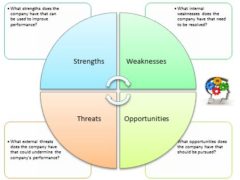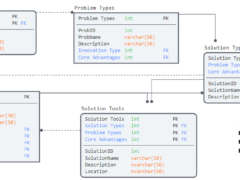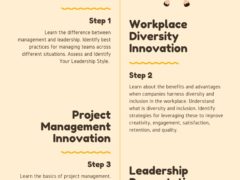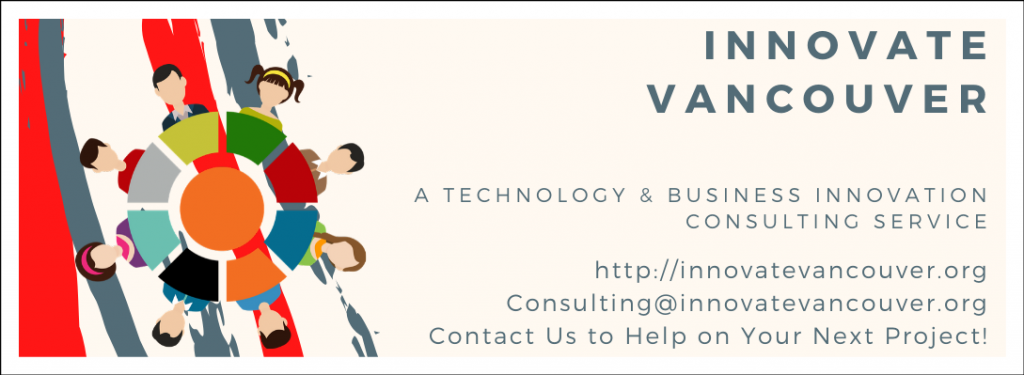
SWOT assessment involves identifying the relative strengths, weaknesses, opportunities, and threats of the business model. This includes the regulatory, economic, political, social, and internal environments.
Delineating fact from fiction, preference from reality, and present outcomes from future desired outcomes becomes crucial.
An inability to distinguish these can undermine the SWOT analysis and lead the business down counterproductive, if not destructive, paths.
Case Example: Data Analytics Inc
Glassdoor is also a useful platform for discovering data driven information. This information may not be mirrored in explicit internal feedback mechanisms. This is because internal innovation information vectors often apply a filter that limits objectivity, systems thinking, and critical analysis.
The SWOT analysis is greatly strengthened with the customer journey map, survey instruments, and audit tools. These tools help discover what prevents the business model from crossing the chasm from startup to growth stage. They also present conditions to realizing the leadership team’s future vision for the company.
The business industry for Data Analytics Inc. was reviewed in previous articles. Several of the strengths of the DaaS model were reviewed. A Glassdoor review provides one viewer’s experience. It helps the leadership team identify public perception. Areas for growth and improvement are also highlighted.
Generic Insights
Evaluated from a business model perspective, particular topics that pop-out include the following:
- Role definitions
- Supply chain efficiency
- Recruitment values
- Facilities layout
- Company culture, &
- Transparency
Insights gained earlier can be informed further by drafting out the company’s business model. This is in addition to the questions identified for confirming and evaluating KPI performance across the business model. Weaknesses & threats can be identified as areas of deteriorating performance. Lost value and conflicting alignment can also be confirmed. Additionally, deteriorating financial returns are confirmed.
The solution to the deterioration of performance will depend on the source:
- Key partners
- Key activities
- Value proposition
- Customer relationships
- Customer segments
- Key Resources
- Channels
- Cost structure, or
- Revenue streams?
Evaluation Across the Business Model

Strengths & opportunities can similarly be identified as KPI performance improves.
Understanding the sensitive relationship between all quadrants in the SWOT analysis (strengths, weaknesses, opportunities, & threats) is crucial. It often differentiates between effective planning, high impact levels, and consistent return on investment. This understanding separates successful strategies from those that miss their mark and give diminishing returns.
Opportunities can often minimize existing weaknesses. Existing strengths can help the business to mitigate ongoing threats to the business model.
Key Performance Indicators
Additional questions can be identified to support the evaluation of the company’s business model. These questions also help to find key performance indicators that drive value for both the business and customers. Answers to these questions can guide the leadership team in finding product/service to market fit. They can identify competitive advantages that exist, if any. They can also highlight the competitive risks in this business’s particular industry.

A SWOT analysis is also supported by taking a closer look at the business supply chain. Each industry’s supply chain is different. The business model, competencies, and vision are aligned with the inputs and outputs of the system.
The supply chain is a crucial part of the business model. It ensures inputs are transformed into the desired outputs. These outputs are then received and purchased by the customer.

The supply chain (as well as the company’s business model) find the areas emphasized by the company. These need to align with the customer’s needs. They must solve the assigned problems for the business to stay viable.
Threatened supply chain and business model competencies can negatively impact performance. They may increase customer satisfaction, but can also result in giving up market share to the competition. In the supply chain model below, the core value propositions of the business model are compromised. This situation requires intervention.
Risks of Business Model Insulation

Companies that remain private, and try to hide from the competition, miss valuable information.
This information could divert ongoing efforts from customer needs. It might also steer efforts away from industry opportunities. Additionally, it could distance efforts from the insights gained by interacting with one’s competition.
Evaluating Alignment

Misalignment between any components of the business model, customer needs, market demands, and industry changes can cause failure. This failure can irrevocably undermine the business model.
This is why each business needs to conduct an ongoing environment scan. Risks (and opportunities) are always surfacing.
Without an ongoing environmental scanning effort, the business model will remain exposed to other instabilities in the environment. Effective leadership must honestly and courageously engage mechanisms. These mechanisms may often give depressing feedback.
Strengthening the Business Model
The SWOT analysis is strengthened by conducting a customer journey mapping exercise. This provides an understanding of the process, tools, and strategies. It also sheds light on the resources and schedules through which services & product lines are activated, engaged, and implemented. Focus groups, surveys, and audit reports can provide additional insight. They offer perspective on the business model’s performance within the current environments.
Travis Barker, MPA GCPM
Innovate Vancouver is a Technology and Business Information Consulting Service (TBICS) located in Vancouver, BC. Contact Innovate Vancouver to help with your new project.
Note: The name of the company in this case study has been changed




